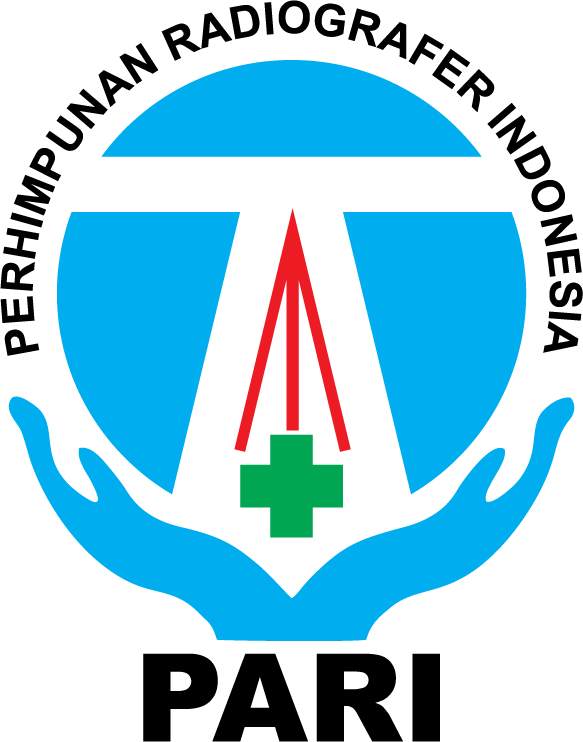Analisis Variasi Penyudutan Arah Sinar Terhadap Informasi Anatomi Pedis Proyeksi Anteroposterior
Abstract
Background : Many hospitals in the examination of pedis AP projection use 0º or perpendicular. It is not based on the theory. So that, it is done research about the variation of direction angle of AP projection in pedis examination toward anatomy information. The examination is aim to find how big the direction angle toward anatomy information which is result by examination pedis AP projection and angle which is result by optimal anatomy information.
Methods : The research which is used descriptive quantitative research by experiment approach. The research is done by pedis phantom which eksposes four times with same expose factor with difference angle variation 0º, 5º, 10º and 15º cephalad and quenstionnaire filling. The research using the independent variable is the direction angle on the examination pedis AP projection and the dependent variable is anatomical information on the radiograph pedis AP projection. The quenstionnaire is filled by three respondents, they are Radiologist. The scoring result of the respondents processes and present in table and graphic to describe and analyse for getting conclusion.
Results : From the scoring result, it is seen the influence of angle toward pedis anatomy information difference.When use of the angle 0º and 5º cephalad show very clear navicular. While the angle of 10º cephalad show open joint space between medial cuneiform and the intermediate cuneiform and a very clear cuboid. The angle of 15º cephalad shows a very clear tarsometatarsal joint. And then, the angle which is yield optimal anatomy information in examination pedis AP projection is the angle of 10 º cephalad.
Conclusion : The radiographic technique of the AP projection pedis with a variation of 0º, 5º, 10º and 15º cephalad produces different anatomical information. At angle 0º and 5º showing very clear navicular, 10º cephalad revealed joints between the medial cuneiform and intermediate cuneiform and cuboid and 15º cephalad shows the tarsometatarsal joint very clearly. The optimal angle in generating anatomical information on the AP projection examination is 10 º cephalad.
Keywords
Full Text:
PDFDOI: https://doi.org/10.31983/jimed.v3i1.3189
Article Metrics
Refbacks
- There are currently no refbacks.
JURNAL IMEJING DIAGNOSTIK by http://ejournal.poltekkes-smg.ac.id/ojs/index.php/jimed is licensed under a Creative Commons Attribution-ShareAlike 4.0 International License.

.png)
.png)
.png)
.png)
.png)
.png)
.png)











